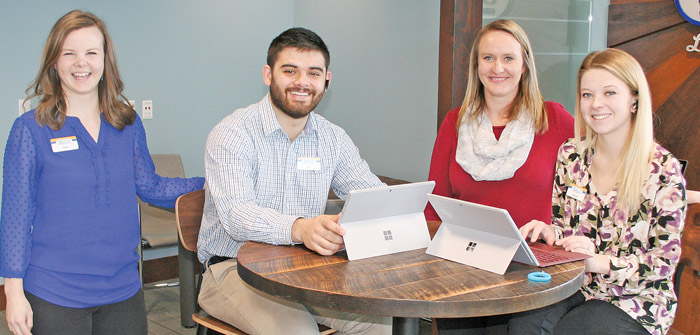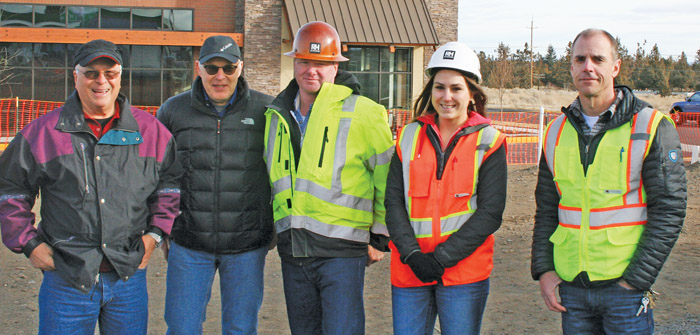One month after changing its name as part of a rebranding effort, AirLink Critical Care Transport, formerly known as Air Life of Oregon, is making a concerted effort to increase awareness of its membership program, which allows families throughout Central Oregon to avoid out-of-pocket air ambulance expenses.
After wrapping up a week-long promotional blitz that included print and radio advertisements, AirLink mobilized its 125 volunteers, who are located in 12 communities throughout Central and Northeastern Oregon, and Lakeview, to talk to the public about the program in general — not only the medical, emergency and ambulance services it offers but also the membership program.
“They staffed booths at county fairs, health fairs, and help serve community senior meals and with Red Cross blood drives,” AirLink Marketing Coordinator Toni Jones said. “One of our teams sponsors a portion of an Adopt-A-Highway program in Molalla County; two or three times a year they put on safety jackets and get out there on the highway.”
Volunteers really are the backbone of AirLink’s day-to-day, non-emergency operations. They are the primary source of distributing brochures to businesses throughout the state, where they are placed in conspicuous spots near cash registers or where other customer interactions occur, and increasing awareness of the option to become a member.
Membership in AirLink costs $50 per year, which is a bargain considering the price tag of being airlifted out of an emergency situation can run anywhere from $8,000 to $18,000. Becoming a member means avoiding any out-of-pocket air ambulance expenses if one is unlucky enough to need emergency air transportation.
With 31,000 members, AirLink receives about $1.55 million from annual fees. The organization is a 501(c) nonprofit, so company officials declined to share AirLink’s operating expenses for this story. But if each emergency airlift costs an average of $13,000, most of which is paid by a patient’s insurance company, and there are three or four life-saving missions run every day (the number AirLink includes in its marketing materials) that means the nonprofit would generate somewhere in the ballpark of $14.235 million annually if it received payment in full for every mission it flies.
“It’s important for people to know that we always provide service regardless of a patient’s ability to pay,” said Chris Pollard, program director for AirLink Critical Care Transport. “So, sometimes we receive no revenue out of a call, sometimes we get a portion of the revenue — there is always a (certain amount) of unpredictability, and it all ties back to the importance of our membership program and community donations we receive. Both add stability to the financial side of our operation.”
But being an AirLink member isn’t about purchasing a supplemental insurance plan; annual fees contribute to many other programs offered by the nonprofit that the public never sees and rarely hears about, Jones said.
“For example, we provide training to medical professionals, people at rural hospitals, and we also work closely with our FireMed (ambulance membership program) partners,” Jones said.
For instance, in Crook County earlier this year, AirLink had a public education day called “Fire Free Day,” where volunteers worked with FireMed staffers to get safety information out to public. AirLink will also dispatch a team to the Burns area next month to work with FireMed partners in a campaign to promote people putting address numbers on their houses in case of emergency, Jones said.
“There are a lot of little things that membership fees contribute to,” she said.
Training is another benefit to the community that people don’t see on the surface. AirLink uses funds from membership fees to provide educational opportunities for medical professionals, often at rural hospitals, and to help EMS crews conduct field case studies and reviews, said Holly Love, operations manager for AirLink.
“We also offer skill stations to paramedics and EMT professionals where they practice starting IVs and other physical skills at the Oregon State EMS Conference in the fall, or advanced cardiac support classes by some of our crew members who hold advanced certificates,” Love said. “And we have a peri-natal flight team that goes out to hospitals to teach classes on the skills needed to take care of Neo-natal patients.”
AirLink, which operates an ambulance, a helicopter and three airplanes (one on the ground in Bend, the other in La Grande) from three bases allowing for speedy response times to any location throughout the 130,000 square miles it covers in Oregon, partners with the Air Methods Corporation based out of Denver. As the aviation service vendor, Air Methods provides pilots, mechanics and FAA compliance support to AirLink.
The organization competes to provide service to medical facilities with the LifeFlight network in Portland, two flight programs based out of Boise, Idaho and a recent entry company called Reach based in Corvallis. Competition is not something talked about very often by the medical community, but it exists, and these critical care air transport companies want to garner all of the business they can, especially as nonprofit organizations — the more “business” they get the more exposure they receive.
“The key message is while we call it competition we have friendly relations and shared goals,” Pollard said. “All flight programs in Oregon focus on a mission of providing top quality patient care. Normally, (practitioners will) contact the closest flight program, and there is an emphasis on rapid response time. In terms of inter facility transports, patients are already at a hospital. There may be some latitude to show a preference for which crew they contact, but sometimes it comes down to who has the most advanced, well-trained crew. Sometimes it just comes down to local staff preferences.”
AirLink was founded in 1984 and has transported close to 14,000 patients, an unofficial estimate provided by Pollard, in both times of emergency and when a patient needed to be moved to another regional medical facility.
Information: 541/385-6305 begin_of_the_skype_highlighting 541/385-6305 end_of_the_skype_highlighting, www.airlife.org




